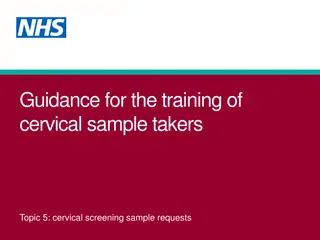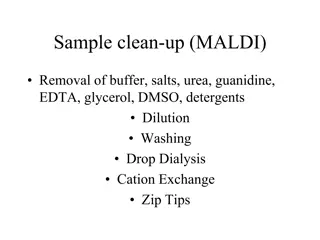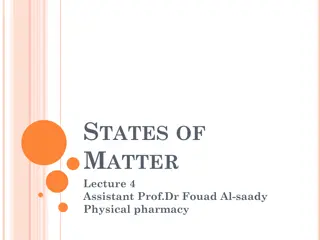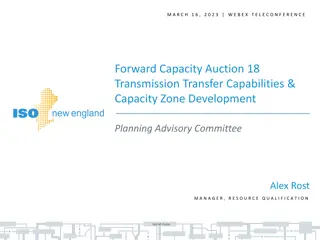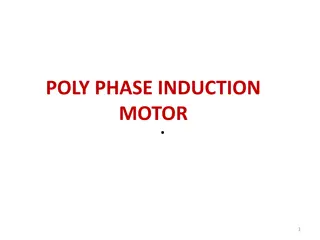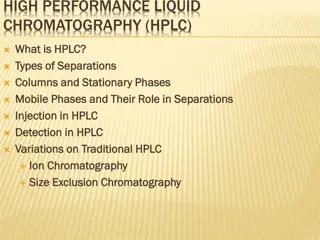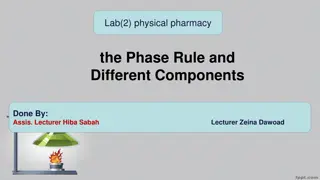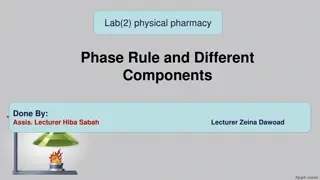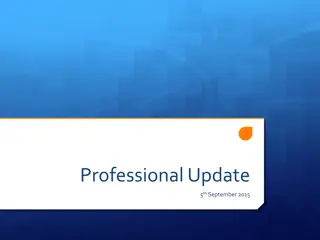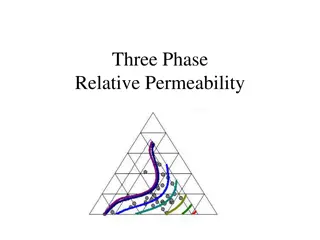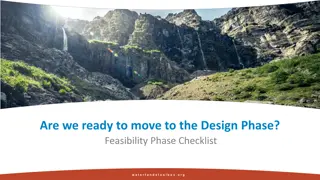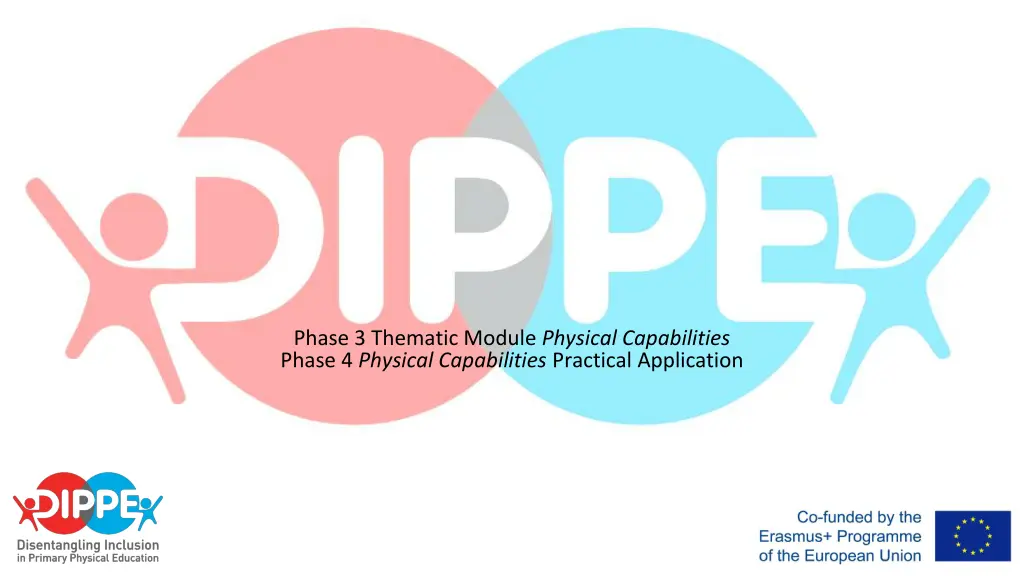
Physical Capabilities Workshops: Mark and Maria Scenarios
Explore the physical capabilities workshops focusing on scenarios involving Mark and Maria, discussing what they can do and the challenges they face in school and physical education lessons. Reflect on methods of engagement, representation, action, and expression to support their learning and development.
Download Presentation

Please find below an Image/Link to download the presentation.
The content on the website is provided AS IS for your information and personal use only. It may not be sold, licensed, or shared on other websites without obtaining consent from the author. If you encounter any issues during the download, it is possible that the publisher has removed the file from their server.
You are allowed to download the files provided on this website for personal or commercial use, subject to the condition that they are used lawfully. All files are the property of their respective owners.
The content on the website is provided AS IS for your information and personal use only. It may not be sold, licensed, or shared on other websites without obtaining consent from the author.
E N D
Presentation Transcript
Phase 3 Thematic Module Physical Capabilities Phase 4 Physical Capabilities Practical Application
Phase 3 Thematic Module Physical Capabilities This workshop focuses on the Physical capabilities Module Definition of Physical capabilities
Including Mark: Discuss (a) Can you identify what Mark CAN do from reading the scenario presented? (b) Let s talk about what challenges arise for Mark in his everyday life in school? (c) Now let s examine what challenges arise for Mark in his PE lessons?
Including Mark: Reflect What means or methods of engagement, representation, action and expression are evident in this example? Engagement: How can you keep their interest? (e.g. offering choice and autonomy, using a variety of equipment, modifying the rules or organisation of a game) Representation: How can you present your activity in different ways? (e.g. using teacher demonstrations, peer demonstrations, task cards, media clips) Action and Expression: How can the children demonstrate what they know? (e.g. offering choice in how they execute skills, providing opportunities for self-regulated movement)
Including Maria: Discuss (a) Can you identify what Maria CAN do from reading the scenario presented? (b) Let s talk about what challenges arise for Maria in her everyday life in school? (c) Now let s examine what challenges arise for Maria in her PE lessons?
Including Maria: Reflect What means or methods of engagement, representation, action and expression are evident in this example? Engagement: How can you keep their interest? (e.g. offering choice and autonomy, using a variety of equipment, modifying the rules or organisation of a game) Representation: How can you present your activity in different ways? (e.g. using teacher demonstrations, peer demonstrations, task cards, media clips) Action and Expression: How can the children demonstrate what they know? (e.g. offering choice in how they execute skills, providing opportunities for self-regulated movement)
Phase 4 Physical Capabilities Practical Application Sports hall or Outdoors
Inclusive Practice: Mark Now can you focus on the Example of inclusive practice illustrating Mark s engagement? Are Engagement/Representation/Action and Expression evident in this example? Child with physical disability: spina bifida Mark is playing games ( Magic and Trucks and Trailers ) with his classmates. Firstly, they run around the play area changing direction frequently prompted by the teacher. Mark manoeuvres the chair expertly. When the teacher calls out magic objects the children have to pause and mime the use of the magic object . Each object can be mimed by Mark using his hands e.g. flying a kite, digging with a shovel, twisting a skipping rope, flying like an aeroplane. Next the teacher explains that the children will play trucks and trailers . In pairs all children collect a large ball, beanbag or small ball from buckets placed at four points outside the space. Mark asks if he can collect the ball first to ensure that he can reach the ball at the top of the bucket. Each pair stands one behind the other, so Anna (Mark s partner) stands behind him. Then they move haphazardly around the space, each pair staying close. The teacher provides a signal (percussion) which means that one child throws the ball or beanbag to his/her partner (a throwing skill) 3 times on hearing the signal. Anna and Mark pause and practise this throwing activity varying the distance of the throw. They then run on with Mark leading.
Marks Activities Activity 1 Play Magic : development of locomotor/body management skills where activities focus on sharing a space while (a) listening and responding independently/individually (b) moving the upper body. Activity 2 Play Trucks and trailers : activities focus on (a) locomotor/object control skills: running/wheeling, dodging, throwing and catching; (b) working cooperatively in pairs while sharing space with the whole group. Equipment: buckets/containers; beanbags and balls; percussion instrument/whistle
Inclusive Practice: Maria Now can you focus on the Example of inclusive practice illustrating Maria s engagement? Are Engagement/Representation/Action and Expression evident in this example? Maria is included in all PE lessons and her teacher is mindful of her need at times to rest so that her functional ability on the non-affected side of her body will be more efficient as she is not fatigued. During a gymnastics programme she performs some individual balances unaided, some with minimal support but she benefits from the balance/counterbalance activities that she performs with a partner and delights in achieving these. Locomotor tasks though challenging if on a raised surface (e.g. bench) can be supported by a peer or her Teaching Assistant. Sometimes this can mean just walking beside her to enhance her confidence. She loves parachute games as well as throwing, catching and striking activities. Sometimes she selects a parachute game that she prefers. Her striking and throwing are undertaken using the functional side of her body. She uses a basket on her knees to collect a large ball although she can catch a small ball with one hand. Sometimes her teacher uses the zonal approach (see resource section below) in teaching small-sided games (e.g. basketball or Olympic handball) to ensure that Maria can play more effectively as a member of a team. Her manipulation of a wheelchair allows her to partake in these games activities more effectively. Running activities are very good for her. However, when participating in relay races which she loves, she runs slowly relative to her peers, restricted by her gait. Her teacher modifies the distance so that she can cope better with the challenge. She can manage to pass and receive a baton using the downsweep technique. Maria chooses if she would like to be the lead or anchor runner for example. Regular allocation of time for the physical education programme ensures that Maria avoids deterioration in performance. Although her individualised therapy programme supports her well, her motivation to perform tasks is heightened in the physical education class due to the social interaction with her classmates.
Marias Activities Warm Up Activity 1: A throwing, catching and striking game: Bat and Run Maria plays a game of 3v1 Bat and Run . Maria bats three tennis ball in succession from base 1. The other 3 children try to retrieve the three balls and return them to a bucket while Maria is moving from base 1 to base 2 (5-10 metres apart). How many runs can Maria achieve? She can choose to use her walking aid or her wheelchair to help her achieve the most runs . She can choose to bat standing or sitting in the wheelchair. Maria then takes her turn on the team of 3 who is retrieving the balls (struck by the next child). She can catch and throw the tennis ball as part of the team of 3 as they try to get all of the balls back to the bucket. Activity 2: Striking Challenge Maria begins by practising striking a ball with a bat off the wall. She tries out three different challenges (i) Strike the ball off the wall letting it bounce before returning it (ii) Strike the ball off the wall without letting it bounce (iii) Free play with a ball off the wall: can Maria keep a rally going for 2, then 3 consecutive shots building on this?
Sharing Solutions and Strategies In our groups let s examine the inclusive practices: Is engagement evident for all the children? Are representation, action and expression evident? Present key solution(s)/strategies and provide a rationale for your choices.
References Using the TREE principles to include http://theinclusionclub.com/resources/tic-videos-2/#1013-tic-videos/924-the-tree-framework Inspiring stories of people with disabilities http://www.activityalliance.org.uk/how-we- help/resources/filter:Impairments%20and%20Health%20Conditions/page:1?utf8=%E2%9C%93 Using zones in games to promote inclusion NCPHAD. (2015, March, 24). Inclusive Class Design. YouTube. https://www.youtube.com/watch?v=swplZzvkhWk Adapting activities for a child who is using a walking aid or wheelchair Niland, E., Barry, M., Dempsey, O., Daly, J. (2010). Best Start: Inclusive Schools Project. Dublin: IWA-Sport/Irish Sports Council. Retrieved from URL January 42020. https://activeschoolflag.ie/wp-content/uploads/2015/08/Irish-Wheelchair-Association-Best-Start-Schools-Inclusion-Project.pdf Adults orienteering illustrate how a child could do the same https://www.youtube.com/watch?v=u8ubfvWjY2c https://www.britishorienteering.org.uk/site/trailo/preo Adapting games for children who are wheelchair users https://www.playworks.org/resource/adapting-games-for-students-in-wheelchairs/ Capabilities of children in gymnastics https://www.gymnasticsireland.com/programmes/gymable/video-resources A teacher explains inclusion of a child https://theinclusionclub.com/episodes/ Episode 77 Horvat M., Croce, R., Pesce, C., & Fallaize, A. (2019). Developmental and adapted physical education (6thed.). NY: Routledge. Block, M. (2016). A teacher s guide to adapted physical education: Including students with disabilities in sports and recreation (4thed.). Baltimore: Brookes.

